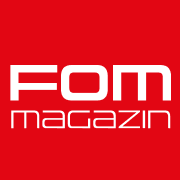An efficient meeting culture increases employee satisfaction and work productivity in the company. FOMs provide the necessary structure for this.
An Editorial of the FOM Magazine
What is employee satisfaction worth to you in your company?
According to a Randstad study from 2016, this should be at least 5,000 euros per employee per year.
At least it's worth it to employees: According to a Randstad employee satisfaction questionnaire, one in three workers surveyed would be willing to give up 5,000 euros in salary per year to be happier at work.
However, the 5,000 euros are only a fraction of the actual potential. Because happy employees also increase work productivity. In the U.S. alone, unhappy workers lead to productivity losses of over $300 billion per year.
Inefficient meetings put a strain on employee satisfaction and work productivity
One of the main causes for a lack of employee satisfaction is an inefficient meeting culture. This has been proven in numerous studies.
- The Journal of Business Research published a study in 2021 that examined organizational behavior in companies over ten years. The result was that 90 percent of employees found meetings to be "costly" and "unproductive.
- A study by Ter Hoeven et al. (2016) found that videoconferencing increased stress at work, especially in jobs that required workers to be highly focused.
- A 2012 study showed that employees suffered an IQ drop of about 15 points in meetings and group work.
The results are clear: employee satisfaction - and thus work motivation and productivity - suffers significantly from an inefficient meeting culture.
Increase work productivity: Does "less is more" apply to meetings?
Maybe!
According to the study in the Journal of Business Research, work productivity per employee increased by 70 percent after meetings were reduced by 40 percent.
In other words: When workers spend less time in meetings, they have more time for productive work.
Fewer meetings also increased employee autonomy, which had a direct positive impact on employee satisfaction and in turn increased work motivation.
Even communication within the company improved by 57 percent. Since employees could no longer "rely" on meetings, they had to communicate more effectively.
Stress in the workforce was also reduced and employees felt less "micromanaged."
Making meetings efficient: The Formula for Work Productivity
However, simply doing away with all meetings is not the right approach. Because when they are organized properly, meetings do serve their purpose.
The emphasis is on "right."
Another scientific finding: A 2018 study found that meetings that didn't start on time were one-third less efficient than meetings that did start on time. That's true both in terms of actual meeting outcomes and perceived efficiency on the part of employees.
So it's not about doing away with all meetings, it's about creating an efficient meeting culture!
FOMs increase meeting efficiency
Can FOMs increase employee satisfaction?
Not directly, but FOMs create a more efficient meeting culture and that in turn has a significant impact on employee satisfaction.
First, FOMs generally lead to a lower meeting load. The structure of the meetings forces those present to limit themselves to the essentials and to stick to the time frame. The fact that people can prepare for meetings in advance, for example by using agenda templates, also means that less time is wasted in meetings.
The result is that there is generally less need for meetings and the meetings themselves become shorter. Both lead to significant productivity gains, as outlined in the studies cited.
Second, the meetings themselves also lead to better results. Instead of "killing time," meetings become productive spaces that focus on a specific topic. At the end, there must be concrete results and next steps, recorded in minutes that everyone can read.
Especially in times of an increasing shortage of skilled workers, employee satisfaction will increasingly become the focus of companies' working lives. An efficient meeting culture is one of the most important factors here.
How do you ensure in your company that inefficient meetings do not have a negative impact on employee satisfaction? Do you also use FOMs in your company? Write us at contact@fom-magazin.de.







